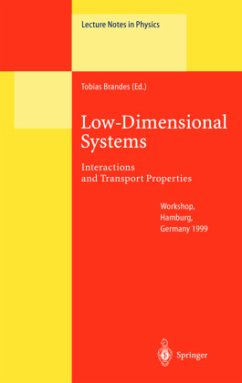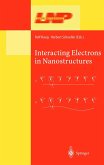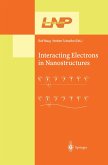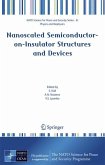This book covers recent advances relating to electronic transport properties of interacting low-dimensional systems. Detailed articles written by leading experts allow newcomers and advanced students to use it as a modern textbook, including many references for further study. Topics are interactions and new phases in one-dimensional systems and the identification of power laws in transport and optical properties, carbon nanotubes, non-equilibrium transport in zero and one dimension, spin-related effects, and novel effects in two-dimensional systems under quantum Hall conditions.
Experimental progress over the past few years has made it possible to test a n- ber of fundamental physical concepts related to the motion of electrons in low dimensions. The production and experimental control of novel structures with typical sizes in the sub-micrometer regime has now become possible. In parti- lar, semiconductors are widely used in order to con?ne the motion of electrons in two-dimensional heterostructures. The quantum Hall e?ect was one of the ?rst highlights of the new physics that is revealed by this con?nement. In a further step of the technological development in semiconductor-heterostructures, other arti?cial devices such as quasi one-dimensional 'quantum wires' and 'quantum dots' (arti?cial atoms) have also been produced. These structures again di?er very markedly from three- and two-dimensional systems, especially in relation to the transport of electrons and the interaction with light. Although the technol- ical advances and the experimental skills connected with these new structures are progressing extremely fast, our theoretical understanding of the physical e?ects (such as the quantum Hall e?ect) is still at a very rudimentary level. In low-dimensional structures, the interaction of electrons with one another and with other degrees of freedoms such as lattice vibrations or light gives rise to new phenomena that are very di?erent from those familiar in the bulk ma- rial. The theoretical formulation of the electronic transport properties of small devices may be considered well-established, provided interaction processes are neglected.
Experimental progress over the past few years has made it possible to test a n- ber of fundamental physical concepts related to the motion of electrons in low dimensions. The production and experimental control of novel structures with typical sizes in the sub-micrometer regime has now become possible. In parti- lar, semiconductors are widely used in order to con?ne the motion of electrons in two-dimensional heterostructures. The quantum Hall e?ect was one of the ?rst highlights of the new physics that is revealed by this con?nement. In a further step of the technological development in semiconductor-heterostructures, other arti?cial devices such as quasi one-dimensional 'quantum wires' and 'quantum dots' (arti?cial atoms) have also been produced. These structures again di?er very markedly from three- and two-dimensional systems, especially in relation to the transport of electrons and the interaction with light. Although the technol- ical advances and the experimental skills connected with these new structures are progressing extremely fast, our theoretical understanding of the physical e?ects (such as the quantum Hall e?ect) is still at a very rudimentary level. In low-dimensional structures, the interaction of electrons with one another and with other degrees of freedoms such as lattice vibrations or light gives rise to new phenomena that are very di?erent from those familiar in the bulk ma- rial. The theoretical formulation of the electronic transport properties of small devices may be considered well-established, provided interaction processes are neglected.








